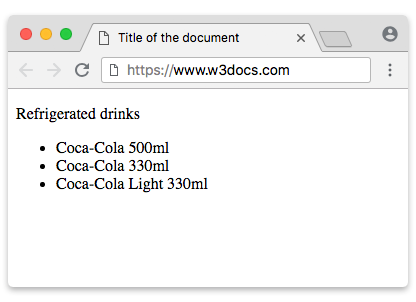The <data> tag is a new element in HTML5. The tag is used to define a machine-readable analogue for the specified data (a standardized version, understandable to automated systems or scripts on the website).
This may be useful in cases when the data should be in a particular format necessary for running scripts, but you don’t want your users to see this format. For example, you want to display a list of products for your users to choose from. Each product has its ID, but you don’t want to show this information to your users. Then you place the product IDs in the <data> tag, and the machine will process this information and show users the product with the corresponding ID.
You can access data attributes from CSS, as they are simple HTML attributes. Data attributes can be stored to include constantly changing information.
The content which must be accessible and visible in data attributes should not be stored, since assistive technology may not access them. Besides, the values of the data attributes may not be indexed by search crawlers.
We recommend to use the <time> tag. If the value is date or time related.
Syntax
The <data> tag comes in pairs. The content is written between the opening (<data>) and closing (</data>) tags.
Example of the HTML tag:
<!DOCTYPE html>
<html>
<head>
<title>Title of the document</title>
</head>
<body>
<p>Refrigerated drinks</p>
<ul>
<li>
<data value="1545325112">Coca-Cola 500ml</data>
</li>
<li>
<data value="1545325113">Coca-Cola 330ml</data>
</li>
<li>
<data value="1545325114">Coca-Cola Light 330ml</data>
</li>
</ul>
</body>
</html>Result

Attributes
| Attribute | Value | Description |
|---|---|---|
| value | machine-readable format | Sets the machine-readable version of the contents of the <data> tag. |
The <data> tag also supports the Global Attributes and the Event Attributes.
How to style <data> tag?
Common properties to alter the visual weight/emphasis/size of text in <data> tag:
- CSS font-style property sets the style of the font. normal | italic | oblique | initial | inherit.
- CSS font-family property specifies a prioritized list of one or more font family names and/or generic family names for the selected element.
- CSS font-size property sets the size of the font.
- CSS font-weight property defines whether the font should be bold or thick.
- CSS text-transform property controls text case and capitalization.
- CSS text-decoration property specifies the decoration added to text, and is a shorthand property for text-decoration-line, text-decoration-color, text-decoration-style.
Coloring text in <data> tag:
- CSS color property describes the color of the text content and text decorations.
- CSS background-color property sets the background color of an element.
Text layout styles for <data> tag:
- CSS text-indent property specifies the indentation of the first line in a text block.
- CSS text-overflow property specifies how overflowed content that is not displayed should be signalled to the user.
- CSS white-space property specifies how white-space inside an element is handled.
- CSS word-break property specifies where the lines should be broken.
Other properties worth looking at for <data> tag:
- CSS text-shadow property adds shadow to text.
- CSS text-align-last property sets the alignment of the last line of the text.
- CSS line-height property specifies the height of a line.
- CSS letter-spacing property defines the spaces between letters/characters in a text.
- CSS word-spacing property sets the spacing between words.
Browser support
|
|
|
|
|
|---|---|---|---|
| 62+ | 22+ | ✕ | 49+ |
Practice Your Knowledge
Quiz Time: Test Your Skills!
Ready to challenge what you've learned? Dive into our interactive quizzes for a deeper understanding and a fun way to reinforce your knowledge.